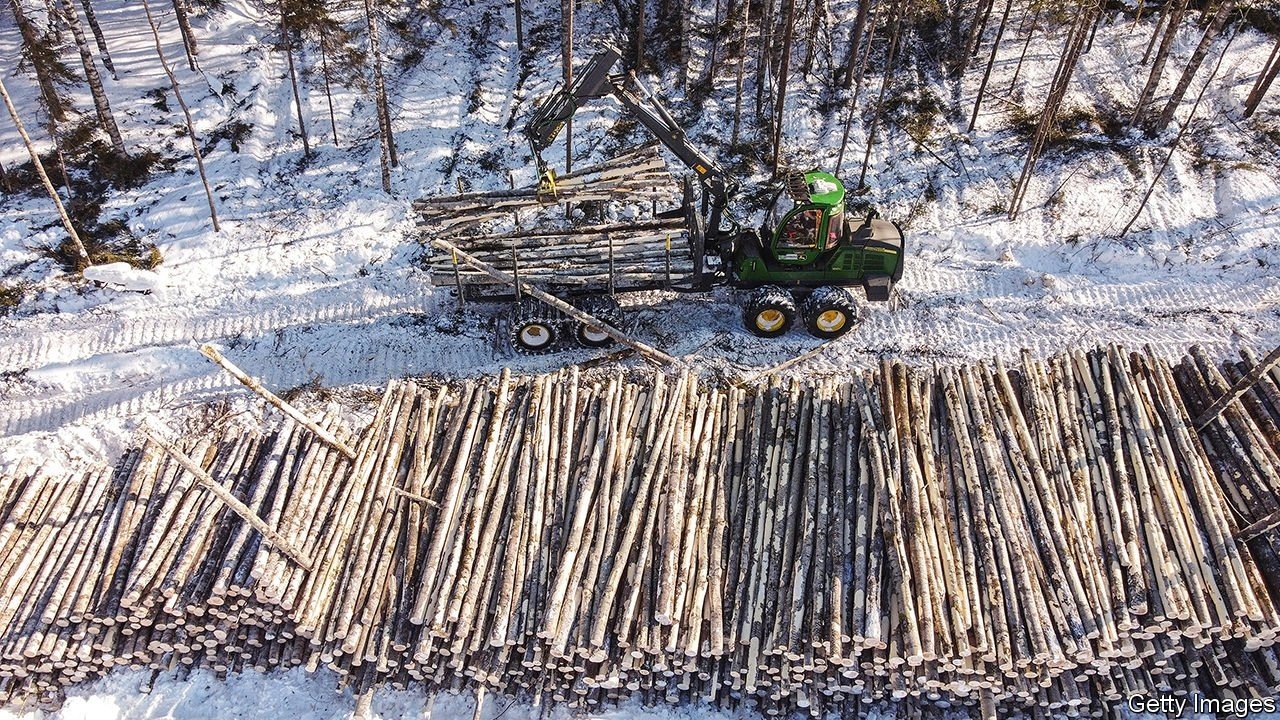https://www.economist.com/node/21800739?fsrc=rss%7Cbus
IN THE BUCOLIC low-rise surroundings of Norway’s biggest lake, Mjostarnet stands out. At 85 metres tall, this building of flats, offices and a hotel, completed in 2019, is Norway’s third-tallest. It is the highest in the world built of wood. Similar structures have sprung up in other countries. So, in many more places, have wooden additions to existing buildings, which weigh around a fifth of what an equivalent steel-and-concrete one would, and therefore risk less damage to the building below.
Mjostarnet stands as a proud example of wood’s comeback after a century of steel, concrete and plastic. Global exports of forest products, including sawn wood, pulp and paper, grew by 68% between 2000 and 2019, to $244bn. Demand is reaching redwood-like heights, fertilised by a pandemic DIY boom. Having ranged between $200 and $400 for much of the past decade, the price of 1,000 square feet of one-inch-thick timber has exceeded $1,400—and hoisted the share prices of wood producers up with it. The stockmarket value of many big ones such as Weyerhaeuser has roughly doubled in the past year; the American giant is now worth $30bn.
Mark Wilde of the Bank of Montreal expects more saw mills to come online in response. They will be different to those of the past, for the industry is also undergoing root-and-branch changes.
The…









